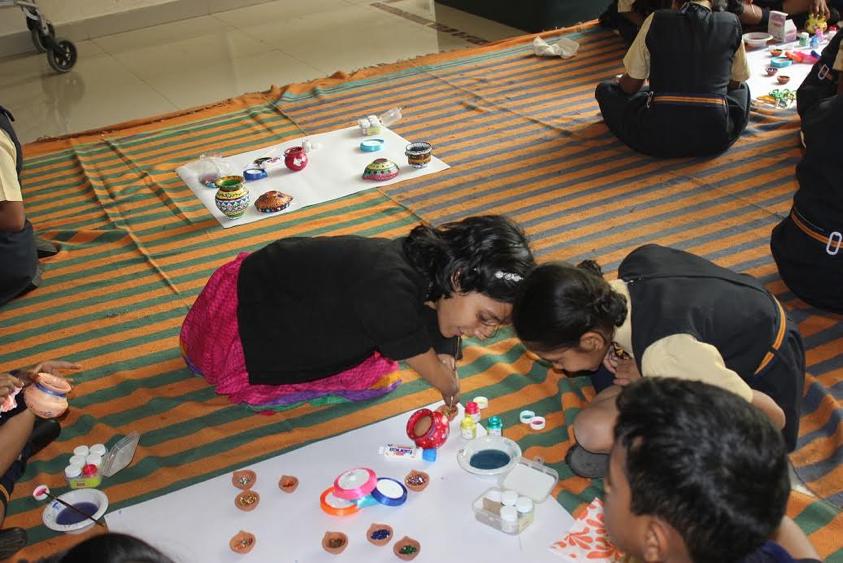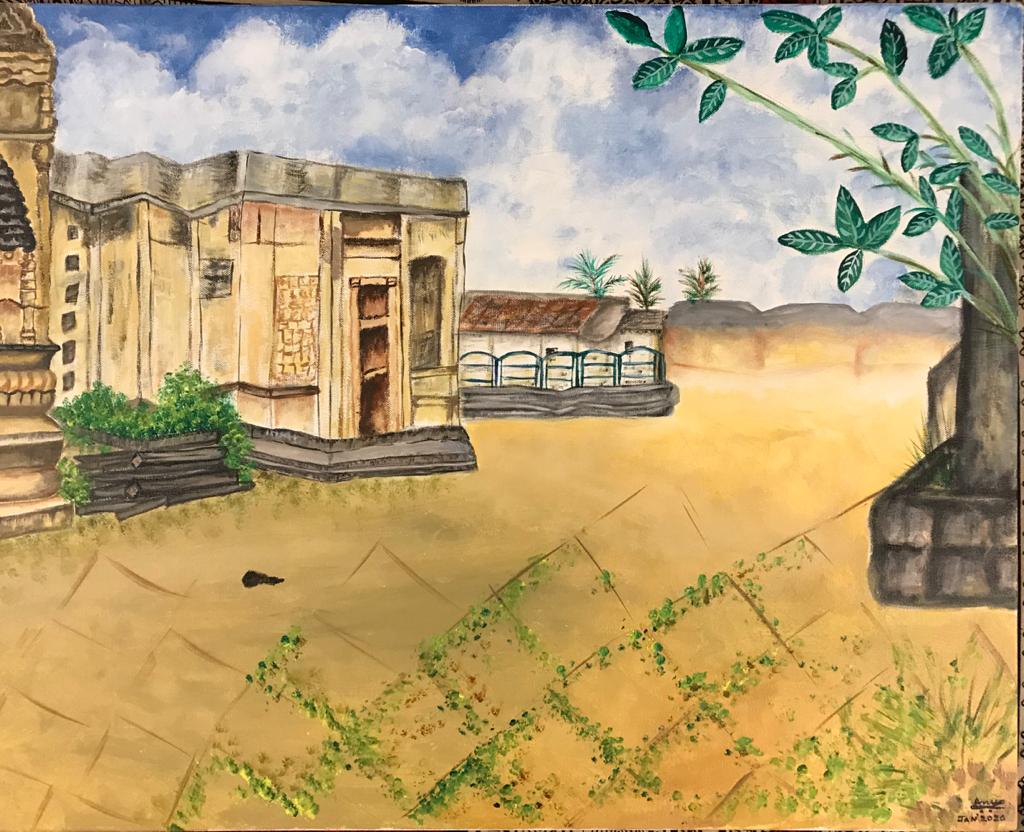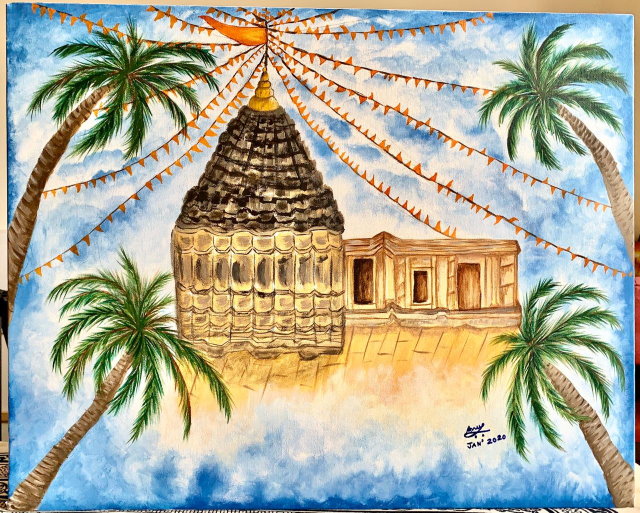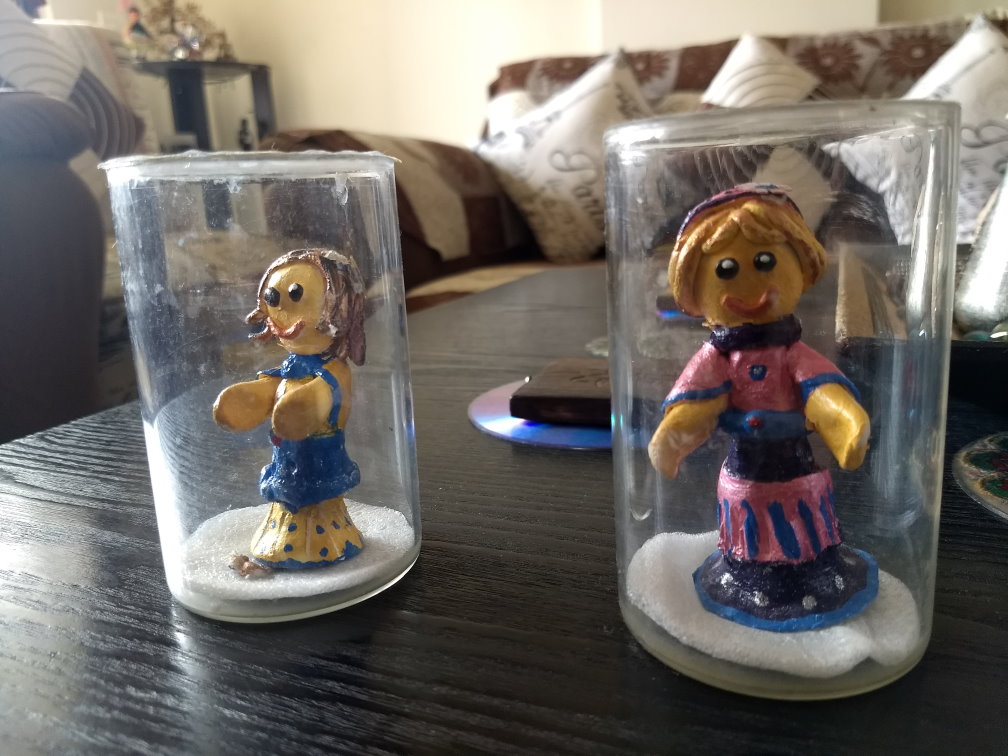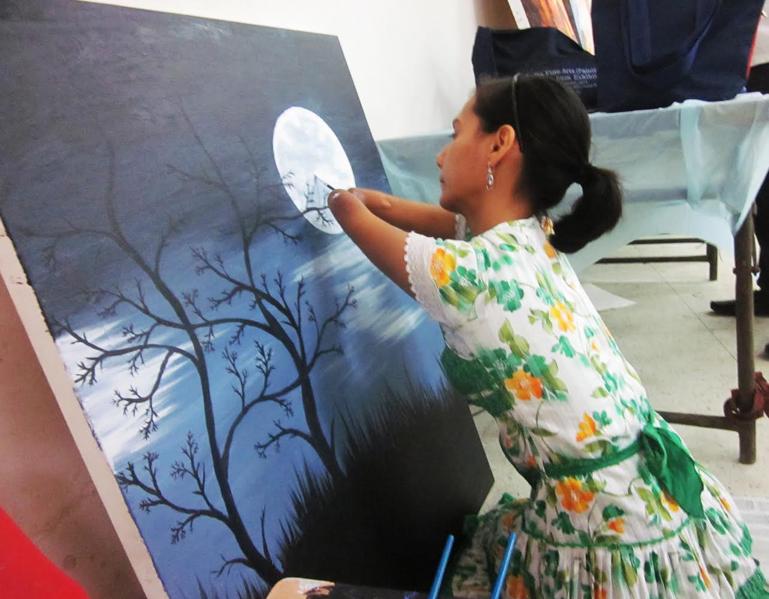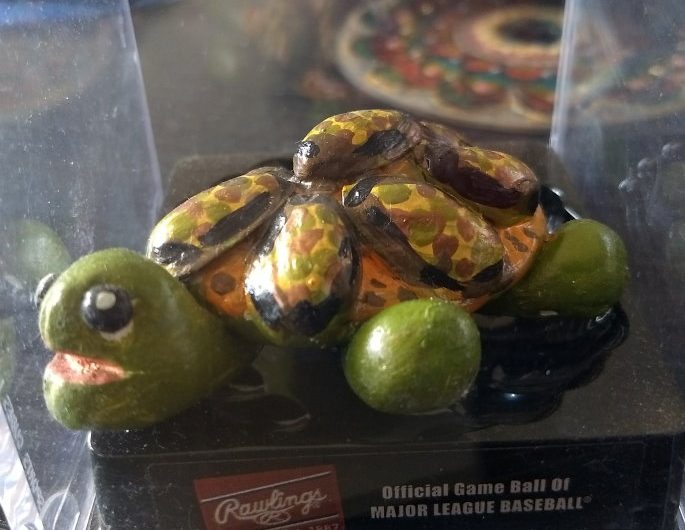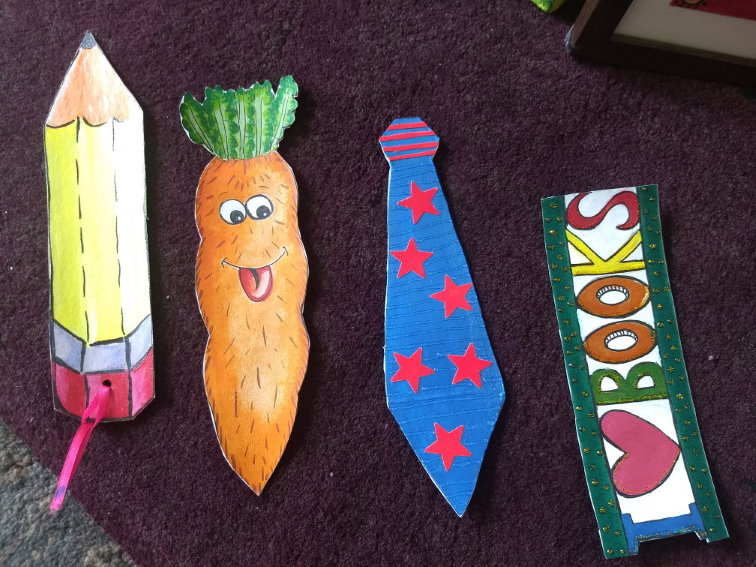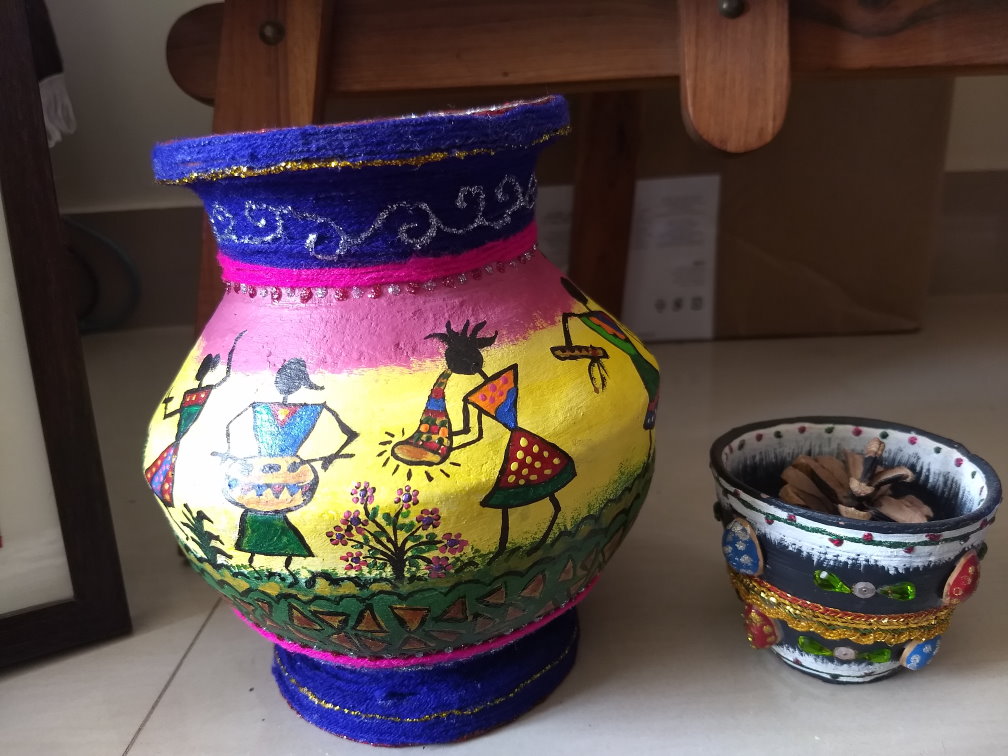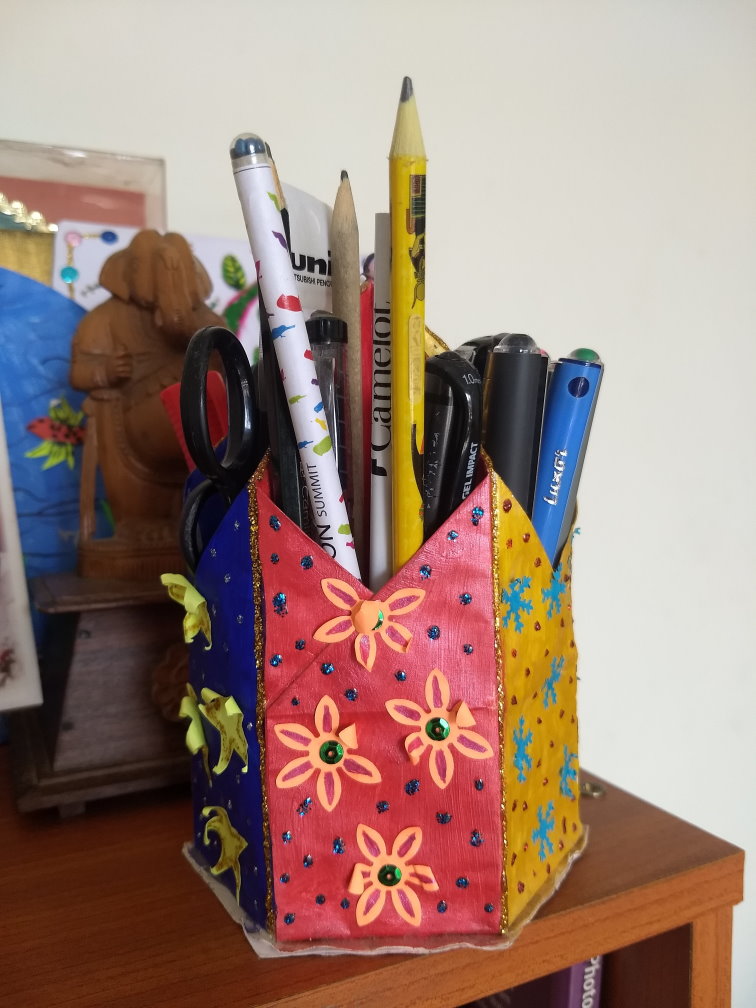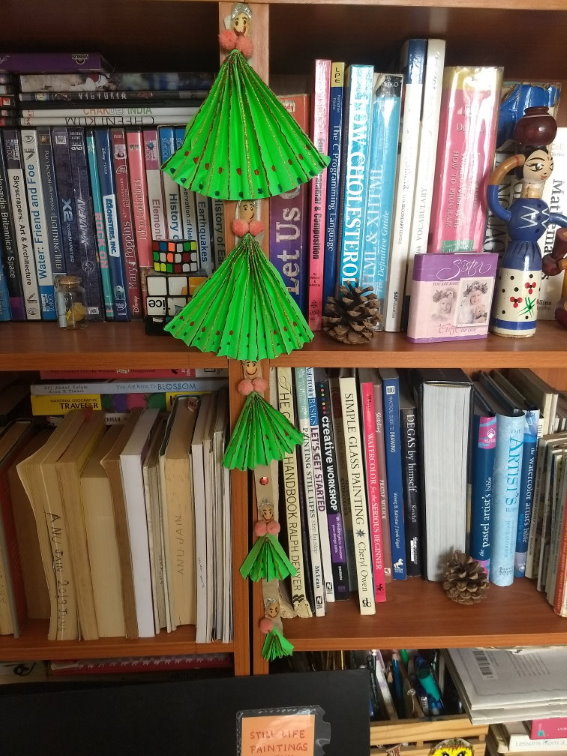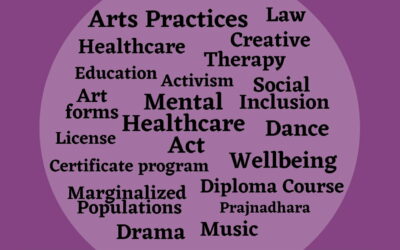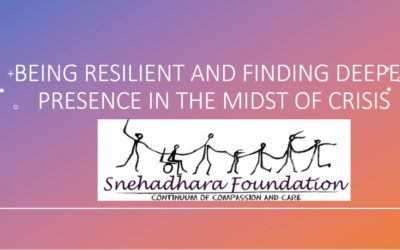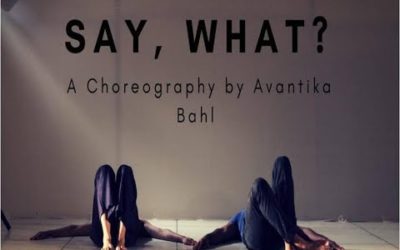There’s very little dry waste that is thrown out from Anu Jain’s household. Most of it is crafted into a useful household item or artefact that is aesthetically way beyond the average “things made out of waste” category. When Anu goes down for a stroll or travels outside the city, she collects twigs, pine cones and other “natural material” that becomes fodder for her experiments with art and craft. This busy art teacher who conducts classes for children in her apartment thrice a week, keeps time to read – every single day.
In her personal arts practice, she loves playing with different media ranging from clay to water colours to oil pastels, glass paints and more. On the walls, shelves and balconies of her house, the results of these experiments are visible and call out the beauty of this artist’s approach to life and art. Anu Jain is also a photographer. She has been an avid fan of flowers (especially the rose) since childhood and her photos carry the imprints of her passion for nature.
“Did I mention that I have arms that extend only till my elbows and legs till knees?” asks Anu towards the end of her description of her journey as an artist, on her website. That, clearly, is how less limiting Anu has allowed her physicality to be in her life. Blessed with support from very loving family and friends, Anu has the widest smile, the wildest sparkle in her eyes and the cheeriest attitude to overcoming challenges. She loves to learn, travel, be with people (especially children), play the keyboard and more. As a professional artist who has qualified with a Gold Medal in Fine Arts from Pracheen Kala Kendra, Chandigarh, her concerns are more about her students, about accessibility for everyone to get everywhere they need to, about the waste generated by online shopping (which she relies on because it is not very easy for her to shop outside the house), about parents who are still forcing their likes and dislikes on children (who usually know exactly what they want to do) and a host of other things.
How it all began…
Anu doesn’t really remember how old she was when she started drawing but remembers her passion for flowers. She drew and painted solely because it brought her joy. Her sister urged her to consider having her first exhibition which brought the media, many well-wishers and fans to her doorstep. Struck by the response to her work, Anu who had been quite a recluse till then, and also spent a lot of time feeling lonely and depressed, completely turned over a new leaf. Listening to her speak, it is difficult to believe that “communication” was one the earliest challenges she faced. “Earlier, people had narrower minds. The internet also was not available,” she says. She used to find it difficult to answer the weird questions that people had for her or to field their comments about her. After that first exhibition which was also “her first public outing,” she answers intrusive or mean queries with, “I’ll ask Google and get back to you,” she shared, laughing with her head thrown back.
Transitioning from being a hobby artist to a professional artist and the importance of qualification…
Having been home-schooled for the lack of a school for children with special needs in Kharagpur, where she grew up, Anu first went to school as a teacher. She cherishes that experience of being with children who are “so pure hearted” and naturally inclusive in their way of interacting with others. When she showed a penchant for art as a teenager, a search for art teachers who would come home and teach her initially brought home a person who she found “used to touch me unnecessarily and tell me how to hold the brush or how to draw.” He lasted barely a day as she indicated that she needed a teacher who would teach her “techniques” but leave her to manage her body. That was when Ms. Sharmila Roy came into her life. She taught Anu in a way that prepared her for the life she is now leading. Ms Roy also pointed her in the direction of a course in Chandigarh where Anu could qualify as an artist. That is where Anu developed her stamina for writing exams – theory and practicals. She also completed her school equivalent education through the American Council where more than the qualification she valued learning how to negotiate different kinds of question papers, covering Multiple Choice Questions (MCQs) and other formats of writing or using the keyboard. She recalls her brother’s help during this phase and reiterates how her siblings have stood by her.
On how the arts has changed her life and what it is like to be a teacher…
“Art makes me feel connected to the world,” says Anu. It has helped her connect with herself and with others. She initially started teaching when her neighbours in Kharagpur suggested that she help some children learn drawing. “We had so much fun because we were learning together. After the classes, we would all play together.” Her approach even now is to chat and play with the children and never force them to overwrite their own style or approach to art.
“Every day is different when you are a teacher,” says Anu who giggles over the many funny moments she has shared with her students. “Two of them come half an hour early and leave an hour after class is over because they love my class so much,” she says, adding that she never manages to draw the boundaries of timing with them because they are so honest in their expression of delight. Earlier she would find it awkward to express her disagreement to parents over forcing children to class but now she finds it is impossible to watch parents doing that. “I request parents to let their children do whatever they are interested in.”
On what inclusion means to her and her suggestions to people and policy makers in fostering a more inclusive world…
Inclusion for Anu is about equality. “Make the world accessible to everyone so everyone can get where they have to,” she says. “People with needs already have multiple problems in their life, why would you want to add to them?” she asks. She describes how it is far from common in India to have ramps to access public spaces. In some places, the ramps are badly built and have just been put in to fulfil a checklist, not to meet the real needs of wheelchair users. While we are still at the level of trying to get basic amenities in place for people with needs, we have a long way to go before actually creating a socially inclusive world, she says.

